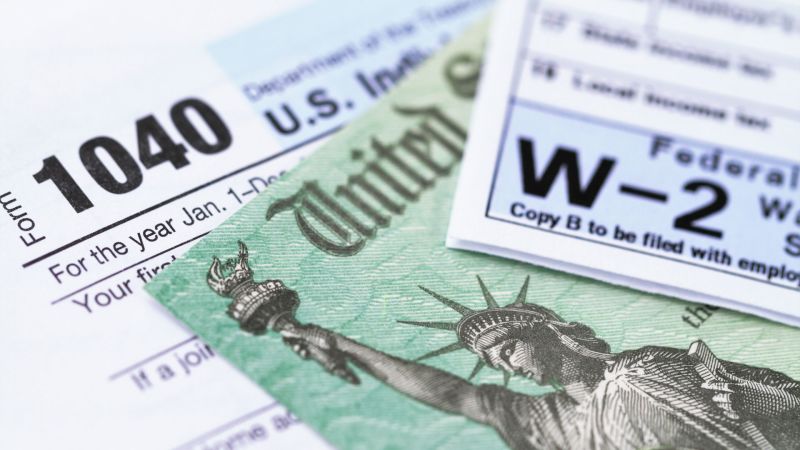Taxes are due tomorrow. Here's how to file for an extension

With the tax deadline looming tomorrow, many Americans might feel a wave of panic as they scramble to gather their financial documents and file their taxes. However, there is a solution for those who find themselves unprepared to meet the deadline: filing for an extension.
The Internal Revenue Service (IRS) grants a six-month extension to taxpayers who need additional time to prepare their tax returns. This extension pushes the filing deadline from April 15th to October 15th, allowing taxpayers to avoid late filing penalties.
Those contemplating filing for an extension should be aware that it only pertains to the filing of the tax return and not to any tax payments due. Individuals who owe taxes are still required to estimate the amount due and pay it by the original deadline of April 15th. Failure to pay on time may result in penalties and interest charges accruing on the unpaid amount.
Here is a step-by-step guide on how to file for an extension:
1. Estimate Your Tax Liability: Before filing for an extension, you need to estimate your tax liability for the year. This involves calculating your total income, deductions, and credits for the year to determine how much tax you owe.
2. Pay Any Due Tax: If your estimated tax liability shows that you owe tax, you should make a payment by the April 15th deadline to avoid late payment penalties and interest. You can make a payment online through the IRS’s Direct Pay system or by mailing a check or money order.
3. File Form 4868: To officially request an extension, you need to fill out and submit Form 4868, Application for Automatic Extension of Time to File U.S. Individual Income Tax Return. It can be filed electronically through tax software, the IRS’s Free File system, or a tax professional. If you prefer to mail it, ensure it’s postmarked by the April 15th deadline.
4. Receive Confirmation: After submitting Form 4868, you should receive a confirmation from the IRS acknowledging they have received your request. Keep this confirmation for your records.
5. File Your Tax Return by October 15th: Once your extension is granted, you have until October 15th to complete and file your tax return. If you fail to file by this extended deadline, you may be subject to late filing penalties.
Remember, an extension gives you extra time to file your tax return, but it doesn’t provide additional time to pay any taxes due. If you don’t pay at least 90% of the tax you owe by the original due date, you’ll face a late payment penalty. The penalty typically starts accruing the day after the due date and continues until the tax is paid in full or the 25% maximum penalty is reached.
It’s also crucial to understand that while filing for an extension can help you avoid the late filing penalty, it won’t prevent interest from accruing on unpaid taxes. The current interest rate is 3% per year, compounded daily.
Lastly, if you are facing financial hardship and cannot pay your taxes, the IRS offers several payment plans and relief programs. These include Installment Agreements, Offer in Compromise, and Temporary Delay of Collection.
In conclusion, while the tax deadline may seem daunting, the IRS provides options for those who need more time. By understanding how to properly file for an extension, taxpayers can alleviate some of the stress associated with tax season and ensure they are not hit with unnecessary penalties.








